Threat modeling is a structured approach used to identify, assess, and prioritize potential cyber security threats in a system or application. By analyzing risks before they become breaches, organizations can ensure their systems are secure and resilient against attacks. Threat modeling helps in pinpointing vulnerabilities and implementing countermeasures to protect sensitive data and infrastructure.
Why Threat Modeling is Crucial for Cybersecurity
Cybersecurity threats are constantly evolving, and organizations must stay ahead of attackers. Threat modeling allows teams to anticipate potential attack vectors and weaknesses within their systems. This proactive approach ensures that security measures are in place before threats manifest, minimizing the impact of a breach. Without threat modeling, organizations are vulnerable to cyberattacks that can result in data loss, financial damage, and reputational harm.
The 2 Basic Steps in Threat Modeling
The threat modeling process consists of several key steps that help identify, categorize, and mitigate potential threats. It begins with understanding the system architecture, followed by identifying assets, potential attackers, vulnerabilities, and impact assessments. Once threats are identified, risk management strategies such as mitigation and response plans are created.
Step 1: Define Security Objectives
Defining clear security objectives is the first step in any effective threat modeling process. These objectives should outline what needs protection, such as confidential data or system availability. Having specific security goals allows the organization to focus on the most critical areas and avoid wasting resources on low-risk threats.
Step 2: Identify Potential Threats and Vulnerabilities
After establishing security objectives, the next step is to identify potential threats that could compromise these goals. These could include malware, insider threats, or physical breaches. By listing all potential attack vectors, security teams can better understand how attackers might exploit system vulnerabilities. This stage includes analyzing network infrastructure, software, and hardware for weaknesses.
3 Threat Modeling Frameworks
There are various frameworks used in threat modeling to guide the identification and analysis of threats. Each framework provides a structured methodology for evaluating risks. Some of the most commonly used frameworks include STRIDE, PASTA, and OCTAVE. These frameworks have been developed over time and help organizations take a systematic approach to threat modeling.
STRIDE Model
The STRIDE model focuses on different categories of threats that can compromise the integrity of a system. STRIDE stands for:
- Spoofing: Falsifying identity
- Tampering: Modifying data or processes
- Repudiation: Denying actions or events
- Information Disclosure: Leaking sensitive information
- Denial of Service (DoS): Preventing legitimate access
- Elevation of Privilege: Gaining unauthorized access or control
Each of these categories helps security professionals assess various aspects of system vulnerabilities.

PASTA Model
The PASTA (Process for Attack Simulation and Threat Analysis) model focuses on simulating real-world attacks to identify potential system weaknesses. It is a risk-centric approach that evaluates threats based on potential business impact. PASTA consists of seven stages, ranging from defining security requirements to monitoring and responding to threats.
OCTAVE Model
The OCTAVE (Operationally Critical Threat, Asset, and Vulnerability Evaluation) model emphasizes identifying organizational risks, rather than focusing solely on technical aspects. It helps companies assess security threats based on their business operations, including critical assets, processes, and potential impacts.
3 Tools for Threat Modeling
There are various tools available to assist with the threat modeling process. These tools help visualize system architectures, identify vulnerabilities, and simulate potential attacks. Some popular tools include Microsoft Threat Modeling Tool, ThreatModeler, and OWASP Threat Dragon.
Microsoft Threat Modeling Tool
The Microsoft Threat Modeling Tool is a free and widely-used tool for creating threat models. It allows users to define security objectives, diagram system components, and identify potential threats. The tool provides predefined templates and guides users through the process of threat identification and analysis.
ThreatModeler
ThreatModeler is a popular commercial threat modeling tool designed for enterprise environments. It provides an intuitive interface for building models, assessing threats, and managing risk mitigation efforts. ThreatModeler also offers collaboration features that allow multiple team members to work together on threat modeling projects.
OWASP Threat Dragon
OWASP Threat Dragon is an open-source threat modeling tool that focuses on creating threat models for web applications. It includes a graphical interface for designing threat models, identifying potential threats, and analyzing security risks.
3 Key Threat Modeling Best Practices
To effectively implement threat modeling in cybersecurity, there are several best practices to follow. These practices help organizations identify threats early in the development process and create a robust defense against potential attacks. Regular reviews and updates to the threat model are also crucial to keep up with the changing threat landscape.
Regularly Update Threat Models
As technology evolves, so do the types of threats faced by organizations. It’s important to regularly update threat models to reflect new vulnerabilities and security risks. This ensures that threat models remain relevant and effective in addressing the latest threats.
Integrate Threat Modeling into Development Processes
Threat modeling should be integrated early into the software development lifecycle (SDLC). By embedding threat modeling into development processes, security teams can identify risks before they are built into the system. This proactive approach reduces the likelihood of vulnerabilities being discovered after deployment.
Collaboration Across Teams
Threat modeling should not be limited to security teams alone. Collaboration across development, operations, and management teams is critical for effective threat identification. Engaging with various stakeholders helps ensure that all potential threats are considered, including those that may impact business operations.
2 Threat Modeling Challenges
Despite its importance, threat modeling comes with its own set of challenges. Some of the biggest challenges include keeping threat models up to date, the complexity of modeling large and dynamic systems, and ensuring that all team members understand the process. Overcoming these challenges requires a continuous effort to educate teams, improve processes, and adapt to new security landscapes.
Keeping Models Updated
Keeping threat models updated is an ongoing challenge. With constant changes in technology, organizations must continually reassess their systems for new vulnerabilities and threats. Failure to update threat models regularly can result in missed threats and gaps in security defenses.

Complexity of Modern Systems
Modern systems, especially those using cloud computing, microservices, and IoT devices, are becoming increasingly complex. Modeling these systems for potential threats requires a deep understanding of both the architecture and the evolving threat landscape. The complexity of these systems makes it harder to ensure all vulnerabilities are addressed.
Break Through Tech Barriers with LK Tech
Threat modeling helps organizations stay ahead of cyber threats by identifying, assessing, and mitigating security risks before they become major issues. With structured methodologies and a proactive approach, businesses can strengthen their defenses, ensuring critical data and systems remain secure. At LK Tech, we provide top-notch IT support tailored to your unique needs, helping you implement effective threat modeling strategies. Our experts work closely with your team to enhance security, reduce vulnerabilities, and safeguard your operations. If you're looking for reliable cybersecurity solutions from one of the leading Cincinnati IT companies, don’t forget to reach out to us today and let’s build a stronger defense for your business.


